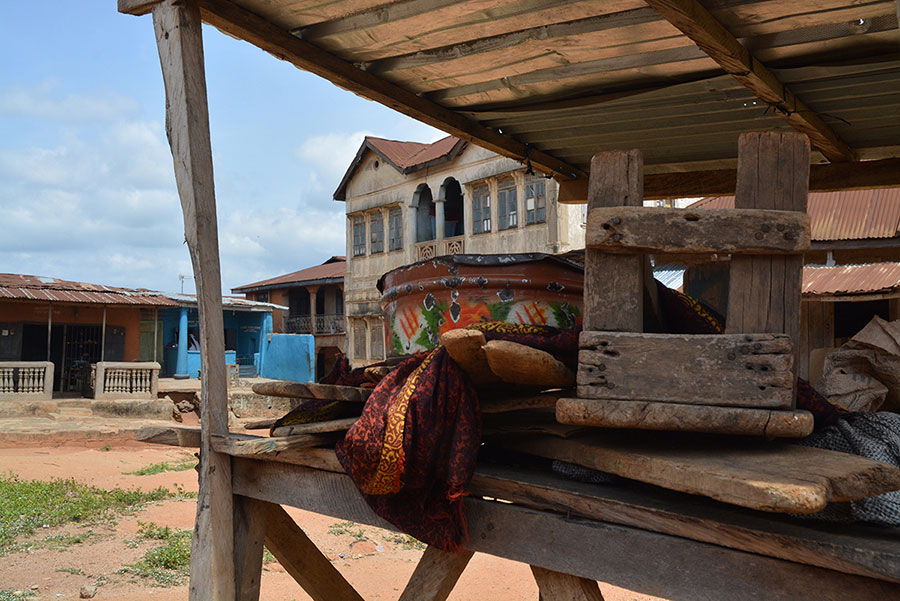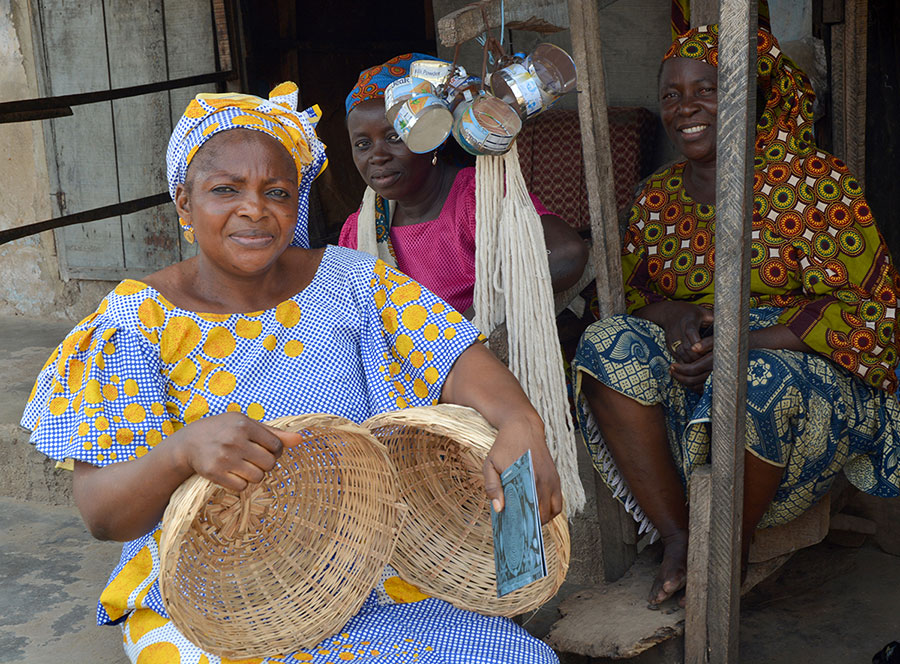At Isale Osun, we stop to check the progress of the builders. They are keen to show us the new toilet pit they have nearly finished, located in the inner courtyard. To get to it meant weaving left and right through narrow dark spaces between houses, past the odd chicken and one or two goats. The only light at one point was from dusty beams striking down from holes punched in the tin roof. Spielberg would approve. After we had inspected the impressive hand-dug and very square, deep pit (complete with a right-angled turn into the seat area for modesty), I stopped to exchange pleasantries with the elderly lady who we had photographed several times. She was sat on the floor eating Okra with one hand. I didn’t understand what she was asking me of course, until one of the girls turned up as if on cue and translated. She was asking me to join her, but as we had to move on I respectfully declined, and not just (as I tell myself) that Okra is not my favourite thing. It’s a little slimy for me.
On our way back through town we pass some small shops by an empty market square. The main building across the square is of the old colonial style, and as with most of these buildings, the hot/wet/dry climate soon eats away at the fabric of the building. Timber shutters and doors become bleached in the sun and the slow creep of algae from the ground is encouraged by the heavy seasonal rains. On the far side are smaller shops, some with pillars holding up the tin roof, some painted bright blue (a popular colour here), and some with the cheaply produced and often delightfully crumbly concrete colonnade ‘fence’.
A single market stall stands empty in the foreground.

A pile of baskets caught my eye. There were also pots and scourers, and food tins re-modelled into oil lamps, small stoves and even graters. Nothing that is remotely useful is wasted here, and it seems there is a whole industry of inventive recycling.
 Three ladies sat under the roof gossiping, until we got out of the car, that is. One lady in particular was wearing a striking blue and yellow outfit and seemed to be the more senior in rank of the three. She had a handsome face with prominent tribal scars, and her inner calm and sense of humour shone through. I’m sure we didn’t look as though we needed any baskets or lamps, and so a conversation started. It turned out that the ladies knew Baba Lawoyin, and knew that he had passed on recently. We gave the lady in blue and yellow (regretfully didn’t catch her name) an invitation to the Celebrations, they happily posed for photos and we went on our way.
Three ladies sat under the roof gossiping, until we got out of the car, that is. One lady in particular was wearing a striking blue and yellow outfit and seemed to be the more senior in rank of the three. She had a handsome face with prominent tribal scars, and her inner calm and sense of humour shone through. I’m sure we didn’t look as though we needed any baskets or lamps, and so a conversation started. It turned out that the ladies knew Baba Lawoyin, and knew that he had passed on recently. We gave the lady in blue and yellow (regretfully didn’t catch her name) an invitation to the Celebrations, they happily posed for photos and we went on our way.
